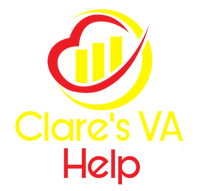Getting Started With Persuasive Copywriting: The First 3 Pieces of Content to Give A Makeover

When you’re ready to create some persuasive copywriting, you may be overwhelmed and wonder where to start. There are three places where your copywriting skills matter and this is where you should start. Once you’ve mastered these three elements of your website, you can go on to tackle other areas of your site.
1. Your ‘About’ Page
The ‘about’ page on any website is usually the most visited one. That’s why it should be clearly labeled. Don’t use a cutesy name in the hopes that more people will click on it. You’ll just confuse your website visitors.
Your ‘about’ page should share your journey and cover why you’re qualified to help potential clients. Spin your journey into a story format that readers can relate to. For example, if you’re a business coach, you might share how you struggled to get your own business started for several years before finding success. By sharing your story, you’ll make it easy for your potential clients to relate to you and show them that you’re qualified to help.
2. Your ‘Services’ Page
Your ‘services’ page is your chance to stand out from other solopreneurs who offer similar services. But don’t cram every single service you offer on the same page. That will overwhelm visitors and they may leave your website before reading through all of the services you perform. That’s why it’s smart to have each service listed on a separate page of your website.
You want your service pages to show that you understand your ideal client and can deliver what they need. Then you should explain how you work and what result your ideal client can expect. For example, if you’re a social media strategist, don’t tell potential clients that you can handle their Facebook advertisements. That’s vague and doesn’t describe what you can do. Instead, you might tell potential clients that you can increase Facebook ad conversions by 20%.
Now, include an easy next step, like joining your mailing list. Direct your visitors to your freebie sign-up page with a helpful link, like this one: ===> Add Your Download Link to Your Free Report <===.
By doing this, you stay connected to potential clients who are interested in working with you but aren’t ready to hire you quite yet.

3. Your ‘Home’ Page
When it comes to your home page, you have less than seven seconds to make your first impression. You want that impression to be a good one.
When someone visits your home page, they should be able to tell immediately if they’re your ideal client or not from your copy. If you’re a social media strategist who works only with small businesses, then your copy shouldn’t be aimed at large corporations. It should be focused on small businesses and how you can help them.
Your home page is also your chance to state why you’re uniquely qualified to help. Don’t use the same wording you did on your About page. Instead, keep your qualifications to one or two sentences on your home page. If a visitor wants to know more, they’ll click on your ‘about’ page for the full story.
Next, offer social proof on your home page. If you’ve guest-posted on several popular blogs, share their logos. If you have testimonials from prominent clients, post those on your home page, too. If you’ve been interviewed in a magazine or podcast, be sure to add this information to your home page as well.
Before you post your new copy on your website, be sure to have a professional editor or proofreader look at it. An extra set of eyes can help you avoid embarrassing typos and make sure that your copy shines.
Journal Your Thoughts:
1. How are you uniquely qualified to help your clients? Is this information on your About page?
2. How can you put more of your personality into your website or blog so that you stand out from other solopreneurs offering the same services?
3. What’s the story behind your brand? Does your copy showcase it or do you need to give some of your copy a makeover?






